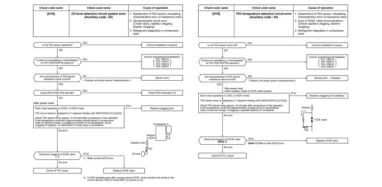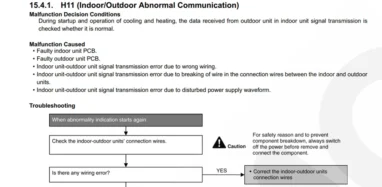What is GPM in HVAC and what makes it important in the first place? Believe it or not, it plays a big role in your system. Read on below to know more about GPM.
What does GPM mean and why is it important to your daily shower? Believe it or not, it’s the law! Your shower head is covered by federal and possibly local regulations.
What is GPM in HVAC systems
Gallons per minute or GPM in HVAC is the decree to measure flow rate that is often used in the criteria for selecting a pump for either water supply pump or open system or chilled water pump or closed system.
What formula do you use to find GPM
To determine GPM, the formula is to divide 60 by the specific seconds that it takes for filling a container of one gallon. For instance, if 1 gallon container gets filled within 5 seconds, it will be 60/5 that will be equivalent to 12 GPM or gallons per minute.
How to calculate GPM for AHU
As stated earlier GPM means gallon per minute. This is among the units used for measuring the volumetric flow rate of water. Here are the steps on how to calculate GPM for AHU:
- Calculate the TR using the formula TR = (GPM × Delta T)/24.
- This will help you find out what the GPM. Its formula is GPM =( TR×24)/Delta T where GPM is flow rate, TR is the ton of refrigeration, while Delta T refers to the temperature difference between return and supply chilled water.
- Consider AH and the outlet and inlet water temperature is 38 degrees Fahrenheit and 30 degrees Fahrenheit with the TR being 10.
- You can now apply all the values in GPM formula.
GPM = (10×24)/(38-30)
= 240/8
GPM=30
For this, remember that the GPM is only dependent on the temperatures because TR remains constant throughout the entire process.
What is GPM in chiller
Flow rate of chiller design is 1.5 GPM per ton or 0.027 L/s per kWr while the minimum is at 1.2 GPM per ton or 0.022 L/s per kWr.
How to calculate GPM on a chiller
The criteria to find GPM or flow rate for a chilled water system or chiller Is based on your distinct cooling load or chiller. Flow rate must be as per the flow requirement according to the cooling load as well as the temperature change based on the formula Q=mCp delta T in which delta T refers to the temperature, m is mass, and Cp is the specific heat of water.
Technicians calculate the volumetric flow rate of a chiller in the same way that they determine flow rate in some other pump systems. Just like other similar systems, flow rate of a chiller will depend on the pressure of the chiller and the overall efficiency of the system.
This pressure is often measured according to total dynamic head, which is a figure that takes into account the static pressure of the fluid, the pressure that the pump adds, and the pressure losses because of friction. To learn more about the ideal static pressure hvac, please read our previous guide.
Below are the steps for calculating GPM for chiller:
- Multiply the horsepower of the fluid by 3960. When the chiller is working at 25 hp or horsepower, the formula will be 25 times 3960 equals 99,000.
- You can multiply this answer by efficiency of the pump. For example, when the pump is working at 80% efficiency, the formula is 99,000 times 0.80 equals 79,200.
- Proceed to dividing your answer by total dynamic head that is being measured in terms of feet. When the head is equivalent to 130 feet, the formula will be 79,200 / 130 = 609.2.
- The answer is flow rate of the chiller that is measured in terms of gallons per minute.
Finding GPM with system temperatures
If flow measurement stations such as balancing valves have not been integrated into the system, it is still possible to calculate the GPM through the hydronic system with the use of some simple measurements. To ensure that you don’t get too overwhelmed, a small hot water HVAC unit with an air handler and boiler will be used for this example.
Physics
Although many of you probably didn’t have any interest in physics when you were still students, many people still use it daily. Physics has something to do with the properties and nature of energy and matter. This harnesses how they are working together. The principles of physics are used for improving the performance of your HVAC system.
The formulas might not seem that important unless you will be using your knowledge from them to achieve something. With the use of formulas, you will find the answers and it will become clear to you what should be done to boost the performance of your system.
BTU
The hydronic systems meant to be balanced have been equipped to let you directly measure the GPM of the equipment and system. The primary water heat transfer formula will be used for calculating system-delivered BTU after determining GPM. It is not necessarily the formula for calculating GMP although understanding this serves as the bridge for easily flowing calculations.
You can use the formula Btu/hr. = GPM x Δt x 500. Here are the steps to follow:
- The hydro-manometer must be connected to the balancing valve that serves the coil or air handler. Measure the water pressure then record and interpret the system GPM.
- Measure the temperature of water that enters and exits the coil using a clamp-on kind of temperature probe. Read then record these two temperatures.
- Deduct the two temperatures to determine the change in water temperature over the coil.
- You can multiply the two figures determined in the earlier steps times and multiply with 500 to determine the BTU that is water-delivered through coil.
If the rated heating capacity of the air handler is 120,000 Btu/hr., this means that you are doing well. On the other hand, if the rated heating capacity of the air handler is 250,000 Btu/hr., this means that there is something wrong.
GPM
This second formula for water heat transfer can help you determine the GPM that moves through the equipment. Again, the formula to calculate GPM is GPM = Air side Btu ÷ (measured water Δt x 500).
Unlike the above formula, this one will be discussed in a bit greater detail. Try to follow the steps so you can use it once the time comes that you need to determine it.
- Start by measuring the change in temperature that enters and exits the air handler’s coil with the use of a dry bulb temperature probe of clamp-on type. The two temperatures must be read and recorded.
- Deduct these two temperatures to determine the water side change in temperature across the coil.
- Multiple the change in temperature time 500 to determine the divisor for the formula. It will serve as the divisor for the formula to be used for calculating the GPM of the air handler.
- It is now time for you to determine the Btu/hr. that is delivered from the air handler’s air side.
- There are two sources where this number can come from. The first one is that you can try using the air handler’s hot water coil rated Btu/hr. The second one is that you can try measuring the delivery of air BTU through the air handler. It is this test method that is considered to be the most accurate although you have to remember that this will require more effort. The technicians who are measuring equipment performance are aware that it is very rare for installed equipment to perform as rated due to defects in the process of installation.
- With the use of the information and test data in hand, you are now more than ready to determine the GPM that moves through the air handler. You can now apply the earlier formula of GPM = Air Btu ÷ (Δt x 500). Make sure that the calculation inside the parenthesis should be completed first. You can now divide the BTU that is airside delivered of 50,000 by 15,550 in order to get 3.2 GPM passing through the coil.
Reading all these steps might be a bit overwhelming, especially as it includes a lot of calculations. But what is important to keep in mind here is that you will be able to increase the diagnostic ability of your HVAC system if you measure some temperatures, subtract, and divide to determine GPM when the test valves and ports are not available.
The GPM of your HVAC might seem like something that is beyond your knowledge. However, you need to remember that while these calculations may seem trivial, these are important for you to continue using your system and enjoy the levels of comfort that it has to offer. Keep these steps in mind the next time you notice your HVAC unit starting to perform less better.
Curious to learn what is enthalpy, how to convert cfh to mbh and the tfa full form in hvac too?


